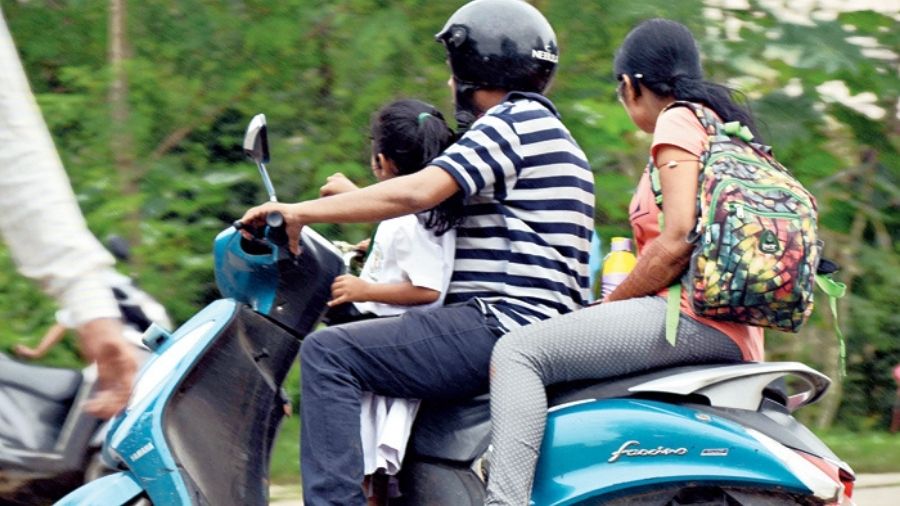The human cost of the Covid-19 pandemic in terms of lost livelihoods keeps rising. But India experienced the biggest fall in its middle class and a much sharper increase in poverty than neighbouring China due to the economic downturn caused by the virus, a new study by the Washington-based Pew Institute says.
Some 32 million Indians tumbled out of the middle class and another 75 million plunged into poverty, defined as earning less than $2 a day, last year due to the pandemic-induced economic slide. That’s because while India fell into a deep recession in 2020, China, where the virus originated, was able to head off a contraction.
India and China, combined, account for almost one-third of the world’s population so what happens in these two countries “will have a substantial effect on changes in the distribution of income at the global level,” says senior study researcher Rakesh Kochhar who wrote the Pew report.
As a consequence of China’s faster economic rebound, only 10 million Chinese fell out of the middle class, just a tiny share of the 504 million who were middle class ahead of the pandemic, the study estimates. Some 30 million Chinese were forced into the low-income ranks, earning between $2-and-$10 a day, bringing the total number of people in that category to 641 million.
The fact that large numbers of people in India were pushed into poverty triggered by job losses is backed by the rise in the spike in numbers of people who took part in MNREGS, the rural employment programme. More than 100 million people from 70 million households participated in the scheme between April 1, 2020 and mid-February, 2021.
Reflecting the slide into poverty for many millions of Indians, in June 2020, when lakhs of workers had returned to their homes in rural India, there was an 80 per cent rise in the people who applied for MNREGS. Even when the economy began to pick up in November, the number applying for MNREGS was 47 per cent higher than in the same year-ago month. The rural employment scheme entitles people to a maximum of 100 days of employment in a year.
In China, by contrast, the report says, “poverty was virtually unchanged.” The contrast in how living standards have evolved in India and China amid the pandemic is starker in the context of where they stood prior to the pandemic,” says Kochhar.
There have always been conflicting calculations about the true size of India’s middle-class with calculations by economists and analysts putting the figure in a wide range of 80 million to 600 million people. The Pew report goes with more conservative estimates of India’s middle-class total. It reckons about 99 million people were expected to be part of the Indian middle class by 2020 and that the middle-class numbers have now been slashed by a third to 66 million. Pew counts people earning between $10 and $20 daily as being part of what it calls the middle-income tier.
The Pew study divides people into five groups: poor, low income, middle income, upper-middle-income and high income. It says the poor survive on less than $2 daily and low-income people survive on between $2-$10. Anyone who earns between $20 and $50 daily is reckoned to be part of the upper-middle-income group. The report says, “all dollar figures are expressed in 2011 prices and purchasing power parity dollars”.
According to the report, around 500 million people in China belonged to the middle-income group before the pandemic and this number is down only slightly now.
India’s economy is forecast to contract by 8 per cent in the latest financial year to March, according to the latest official figures. But analysts expect India’s growth to expand by at least 12 per cent in the next financial year thanks to the low base effect. China, meanwhile, was the only major country to experience economic expansion in the last calendar year, squeezing out 2.3 per cent growth. It’s projecting growth of “over 6 per cent” this year.
The Pew report notes the pandemic has reversed the strides made in reducing poverty in India. In India between 2011 and 2019 the number of poor is estimated to have fallen to 78 million from 340 million.
Because economic growth in China remained positive, even if slower than anticipated, the limited impact on its middle class helped to cushion the effect on the global middle class. In China, there had been a sizable addition of 247 million people to the middle-income tier from 2011 to 2019. The upper-middle-income population had nearly quadrupled, from 60 million to 234 million. Importantly, China accounted for 37 per cent of the global middle-income population heading into 2020.
Globally, the research centre found that the ranks of the middle income and upper middle income slid by 90 million people to just under 2.5 billion last year. Given that India and China also account for more than a third of the global population, “the course of the pandemic in these two countries – and how each recovers – will have a substantial effect on changes in the distribution of income at the global level,” concludes Kochhar.










